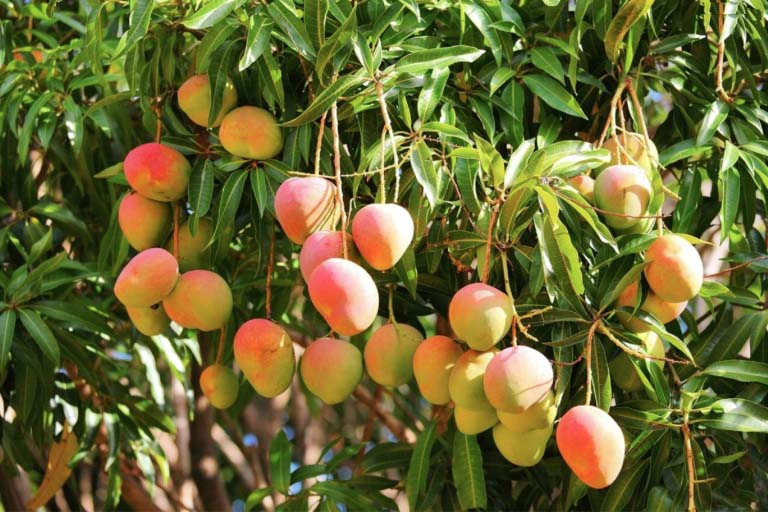|
With the rapid decline of Citrus trees in and around Pinellas County, and their uncertain future looking ahead, I rarely recommend that anyone attempt to plant them. They just aren't doing well in Florida anymore. Because of this, I am frequently asked what type of fruit tree should be planted instead of Citrus? As I run down the list of fruit trees that thrive in Florida, the one that usually stands out the most, is the Mango tree.
The Mango is universally considered as one of the finest fruits, and one of the most important fruit crops in the tropics, and subtropics. While Pinellas County is at the northern edge of the Mango tree's hardiness zone, the tree can still thrive here. Things to consider:
The Mango tree does not tolerate cold temperatures. Young trees can die if the temperature drops below 30 degrees for only a few hours. This means that they will need some type of protection from the cold, until they begin to mature, and even then, some leaf damage, and twig dieback is to be expected when the temperatures drop below 40 degrees. If temperatures drop below 25 degrees, for as little as a few hours, mature trees can die. One common complaint that I hear from customers who already have Mango trees is, 'This thing produces more Mangoes than I would eat in a lifetime, in just one season.' The canopy of a healthy, mature Mango tree can spread as far as 100' and can reach a height of 30' and can produce up to 6 bushels of Mangoes, in one season. As with any fruit bearing tree, there is a very good chance that opportunistic pests will begin to take a liking to your Mango tree. Mangos are a main staple in the diet of fruit rats, and even squirrels have been known to take bites out of Mangoes while they hang in the tree. Mango trees are susceptible to many different types of insect pests, but seldom does this limit fruit production. The two main causes for decline and death in Mango trees are, Anthracnose, and Powdery Mildew, both fungal pathogens. Before You Plant
Once established, Mango trees require very little supplemental watering, usually only during periods of drought. Do not apply supplemental water to leaves, or blooms. Mulch around the base of the tree is suggested, but only a thin layer. Fertilization is recommended in order to produce a healthy fruit crop. As with any tree, the best mulch to use, is the leaves that fall from the tree, as they break down and become fertilizer for the tree. If you have more questions, or would like to learn more about this or any other tree, please don't hesitate to contact us. We would be happy to schedule an appointment.
1 Comment
Effie Grekos
3/17/2019 06:25:25 am
We have a huuuuuge Mango Tree in the front hard that has not been pruned for about 10 years now, causing a number of problems to all neighbors, including allergies, as well as shaded grass that can not grow healthy, rats, and all kinds of wild animals around up and down.
Reply
Leave a Reply. |
Matthew NealAn ISA Certified Arborist with 11 years of experience. Expert in problem diagnosis and treatment. Archives
March 2016
Categories |

 RSS Feed
RSS Feed
